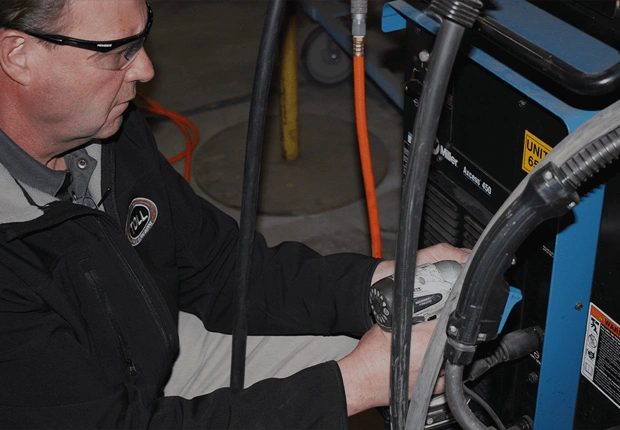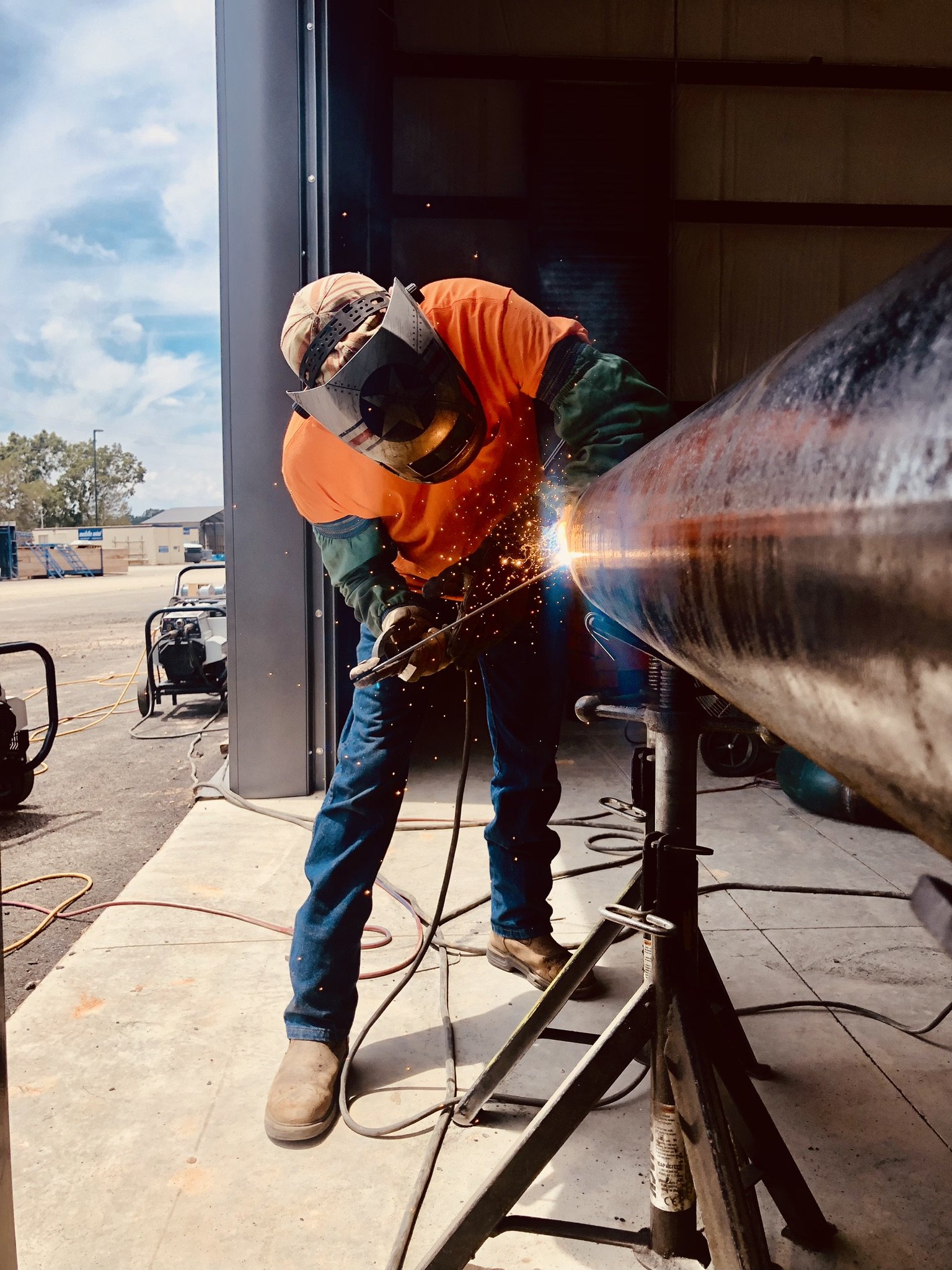Everything about Welding: Secret Insights Into Techniques and Best Practices for Success
Welding encompasses a range of strategies, each fit for certain materials and applications. Comprehending these approaches, such as GMAW, SMAW, and TIG, is vital for achieving suitable results. The best equipment and safety methods can not be ignored. As preparation and troubleshooting play vital functions in the welding process, grasping these elements can considerably boost the quality of the last product. What are the vital aspects that ensure a successful weld?
Understanding Various Welding Strategies
Welding methods encompass a variety of techniques, each suited to specific applications and products. Among one of the most common techniques are Gas Metal Arc Welding (GMAW), Protected Steel Arc Welding (SMAW), and Tungsten Inert Gas Welding (TIG) GMAW, additionally called MIG welding, is popular for its speed and adaptability, making it suitable for slim products. SMAW, or stick welding, is favored for its simplicity and efficiency in outside settings, particularly with thicker metals. TIG welding provides accuracy and control, making it appropriate for elaborate job and non-ferrous steels (Belgrade Welding). Each strategy has its unique benefits and considerations, permitting welders to pick the very best approach based on the task's needs, product kind, and desired results. Understanding these methods is important for successful welding
Vital Welding Equipment and Tools
While numerous welding techniques require details abilities, the best devices and devices are equally necessary for attaining high quality outcomes. Necessary welding equipment consists of welding makers, which differ depending upon the technique-- such as MIG, TIG, or stick welding. Safety gear, consisting of gloves, helmets, and aprons, assurances safety and security and convenience throughout the procedure. On top of that, components and clamps assist safeguard products in position, ensuring precision in welds. Consumables like welding poles, cable, and securing gas are also important components that affect the high quality of the weld. In addition, tools such as mills and cutters help with surface area preparation and post-weld completing, adding to a professional outcome. Buying premium devices eventually improves the effectiveness and efficiency of welding jobs.
Security Practices in Welding
Correct safety and security techniques are essential in the welding sector to secure employees from potential risks. Welders should wear appropriate personal protective equipment (PPE), including safety helmets with proper shading, handwear covers, and flame-resistant garments. Adequate air flow is important to reduce exposure to hazardous fumes and gases created during the welding procedure. In addition, employees should be educated in the correct handling of welding devices to avoid crashes. Fire precaution, such as keeping combustible materials far from the welding location and having fire extinguishers easily offered, are necessary. Normal inspections of equipment and workspaces can help identify possible risks before they result in accidents. By sticking to these security techniques, welders can develop a safer working environment and decrease threats connected with their trade.
Preparing Materials for Welding
Preparing products for welding is a crucial step that significantly influences the quality and integrity of the end product (Belgrade Fabrication). Proper prep work includes cleaning the surface areas to remove pollutants such as corrosion, oil, and dirt, which can compromise the weld. Methods such as grinding, sanding, or using solvents are commonly used to achieve a clean surface. Furthermore, making sure that the materials mesh comfortably is important; voids can cause weak welds. It's also crucial to take right into account the placement and positioning of the components, as this will affect the convenience of welding and the final result. Finally, picking the suitable filler product and making certain compatibility with the base metals is important for attaining solid, resilient welds
Tips for Getting High-Quality Welds
Attaining high-quality welds needs focus to detail and adherence to ideal techniques throughout the welding process. Correct joint preparation is necessary, guaranteeing surfaces are totally free and clean from contaminants. Choosing the ideal filler product and welding technique based upon the base metals is vital for ideal bonding. Preserving constant travel speed and angle while welding can advertise and prevent defects harmony. Additionally, managing warmth input is crucial; excessive heat can cause bending and compromised joints. If essential, consistently evaluating the welds throughout the process enables for instant adjustments. Ultimately, employing ideal post-weld therapies, such as cleaning and stress and anxiety relief, can boost the toughness and honesty of the weld, inevitably making certain a successful result.
Troubleshooting Typical Welding Issues
Welding usually offers challenges that can impact the top quality and integrity of the last item. Common concerns such as porosity, look these up irregular weld grains, and getting too hot can arise, each requiring details troubleshooting methods. Understanding these problems is necessary for welders to boost their abilities and attain excellent results.
Porosity Troubles Explained
Porosity can usually be neglected, it continues to be a critical issue in welding that can compromise the honesty of a completed item. Porosity refers to the existence of small gas pockets within the weld bead, which can lead and damage the joint to premature failure. This issue generally occurs from impurities, dampness, or improper protecting gas coverage during the welding process. To alleviate porosity, welders must validate that the base products are tidy and dry, make use of proper protecting gases, and keep constant welding specifications. Consistently inspecting the devices and environment can also aid identify prospective concerns prior to they materialize in the weld. Attending to porosity properly is vital for accomplishing strong, resilient welds that fulfill top quality requirements.

Inconsistent Weld Beads
Inconsistent weld beads can substantially affect the quality and stamina of a finished product. Different aspects add to this concern, consisting of inappropriate traveling rate, inaccurate amperage settings, and irregular electrode angles. When the welder relocates also quickly, a bead may show up slim and do not have infiltration, while relocating also slowly can cause too much build-up. Furthermore, utilizing the wrong amperage can lead to either undercutting or too much spatter, both of which concession weld stability. The welder's strategy, such as inconsistent lantern motion, can additionally bring about unequal bead appearance. To reduce these issues, welders need to concentrate on maintaining steady, regulated movements and ensuring proper equipment setups to achieve harmony in their welds. Uniformity is crucial to accomplishing reputable and solid welds.
Overheating and Bending Issues
Too much heat throughout the welding procedure can cause substantial overheating and warping problems, affecting the architectural honesty of the work surface. These issues commonly show up as distortion, which can jeopardize placement and fit-up, making further setting up challenging. Variables adding to overheating consist of the option of welding specifications, such as voltage and take a trip speed, in addition to the kind of material being bonded. To mitigate these concerns, welders must keep consistent traveling speed and suitable heat input while keeping visite site track of the workpiece temperature level. Additionally, pre-heating or post-weld heat therapy can assist reduce stress and anxieties brought on by fast air conditioning - Fabrication. Regular inspection and adherence to ideal techniques are vital in stopping overheating and ensuring the durability and dependability of welded structures
Often Asked Questions
What Are the Career Opportunities in the Welding Market?
The welding market offers diverse profession opportunities, including placements as welders, examiners, instructors, and engineers. Experts can operate in production, building, aerospace, and automobile industries, benefiting from solid need and competitive salaries in different duties.
Just How Can I Enhance My Welding Speed Without Giving Up High Quality?
To enhance welding rate without compromising top quality, one must practice reliable strategies, maintain devices, optimize setups, and boost hand-eye control. Normal training and seeking comments can also substantially add to attaining much faster, high-grade welds.
What Certifications Are Readily Available for Welders?
Various certifications exist for welders, consisting of those from the American Welding Culture (AWS), the National Facility for Building And Construction Education go And Learning and Research (NCCER), and various industry-specific organizations. These qualifications improve employability and demonstrate skill effectiveness.
How Does Welding Impact the Properties of Metals?
Welding influences the properties of steels by modifying their microstructure, which can result in adjustments in hardness, strength, and ductility. Heat input and air conditioning prices during the process greatly impact these product qualities.
Can I Bonded Dissimilar Metals Together?
